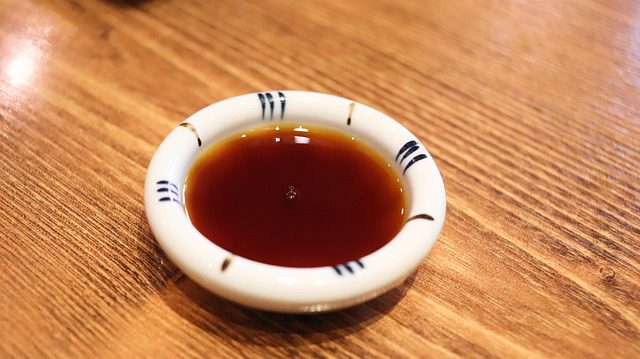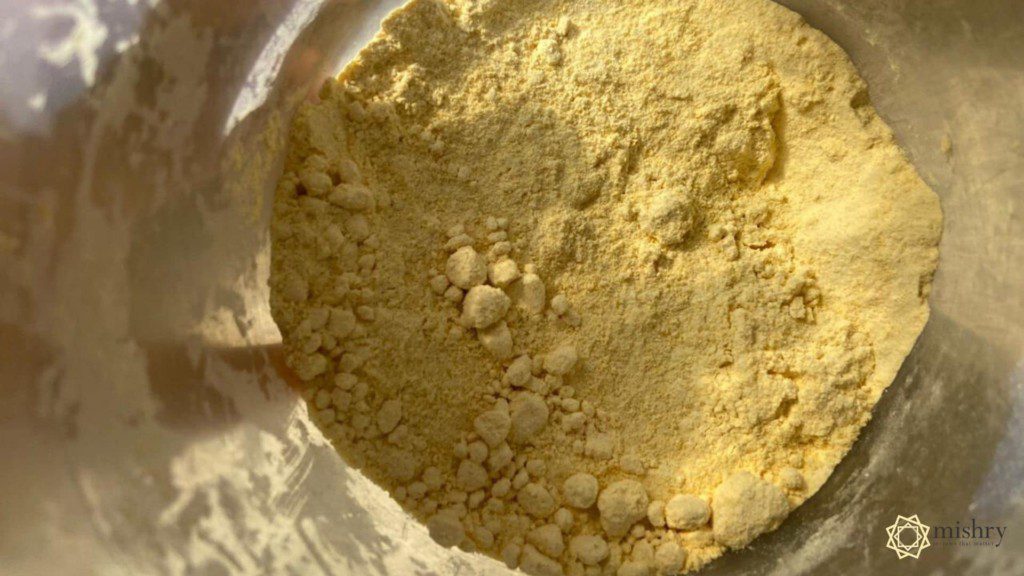If you bake or brew, you know yeast. But do you know what nutritional yeast is? It’s basically the same yeast used for baking or brewing but deactivated to add extra nutrition to your food. It’s dairy and gluten-free and is mostly used to cook vegan food. It’s rich in protein and B vitamins, contains trace minerals, and has a cheesy texture.
What nutritional yeast can do is increase a person’s energy, improve the immune system, promote skin and nail health, prevent hair loss, and sustain a healthy pregnancy. That’s quite a bit, isn’t it? However, if you can’t find nutritional yeast, you might want to get a substitute. However, a major question is ‘what can I substitute for nutritional yeast?‘ This article should be able to help you with that.

1. Brewer’s Yeast
- Formation: Brewer’s yeast is a unicellular organism, particularly Saccharomyces cerevisiae, which is used for brewing. It is also used as a nutritional supplement. It’s rich in chromium, protein, selenium, potassium, iron, zinc and magnesium, and a good source of vitamins B (with the exception of B12) It helps to improve hair, skin, and even alleviate digestive disorders.
- Side Effects: Brewer’s yeast also has some side effects. It causes gas, bloating, and headaches. Before consuming brewer’s yeast, you must consult your healthcare expert. You might also experience some breathing problems and chest pain. Regularly consuming brewer’s yeast may cause a tight throat. It may also result in allergic complexes. If you experience any of these problems, then you must contact your doctor immediately.
- Advantages: Brewer’s yeast is a source of vitamin B. However, it doesn’t contain vitamin B12. It may, thus, result in anemia. You must take an adequate quantity of vitamin B12. You can acquire it from numerous fruits and vegetables, as it is not present in nutritional yeast supplements. You can get brewer’s yeast in the form of flakes, granules, or tablets. Though beer is not reliable for health, yet some varieties of beer contain brewer’s yeast. On average, an adult diet must include around two tablespoons of brewer’s yeast every day. You may consume it in the form of water, juices, or shakes.
2. Soy Sauce
- History and formation: This Asian condiment is made from fermenting soybeans and wheat with water. With its origin in China, soy sauce has been in use for the past 1000 years. Not all soy sauces are identical; tweaks in its production process can lead to different textures and even flavor.
- Benefits: One tablespoon of soy sauce can provide you with around 38% of the daily salt intake. It is also rich in protein, carbohydrates, and vitamins. It may reduce some allergies and infections and is also a good source of antioxidants. It also promotes gut health and the immune system and often promotes digestion.
- Disadvantages: Owing to its high salt content, consuming soy sauce must be limited as it can increase one’s blood pressure. It also contains glutamic acid, also known as MSG or Monosodium glutamate, and excess of it can induce hemialgia. Soy sauce also contains chlorophenols and 3-MPCD, which may cause cancer.

3. Parmesan Cheese
- Formation and Substitution: Delicious and healthy, Parmesan cheese is possibly the perfect substitute for nutritional yeast. It is a high-quality source of calcium and protein and therefore good for bone and dental health. It also reduces blood pressure despite being rich in sodium and fat. It also helps in building healthy blood cells. Parmesan cheese is highly rich in omega 3-fatty acids.
- Disadvantages and Precautions: If you are lactose intolerant, avoiding cheese along with other dairy products is a good idea. It can cause bloating, cramps, diarrhea, among other things. Cheese also bumps up the cholesterol levels, so one needs to be careful with how much cheese to eat. Too much cheese – yes there is such a thing – can also lead to weight gain, thanks to their content.
4. Marmite
- History and Benefits: Marmite is made from yeast extract and is an end product of beer brewing. It contains vitamins like folic acid, vitamin B12, riboflavin, etc. in high concentration. It is salty to the tongue and has a thick consistency and is kind of hard to use for sprinkling. And while it’s an extremely acquired taste, marmite triggers chemicals that might help in the prevention of neurological complications.
- Side Effects: Too much marmite can cause digestive problems and also lead to a few sensitivity reactions. It is high in fiber and too much of it might cause the intestines to react. As it contains compounds such as tyramine, it can cause bad headaches.
5. Chickpea Flour
- Uses and production: Chickpea or gram flour is a staple ingredient in India, Nepal, Bangladesh, Pakistan, and few other Asian countries. It is also considered to be one of the best nutritional yeast substitutes and is rich in calories, carbs, fiber, protein, folate, thiamine, magnesium, copper, iron, fat, phosphorus, and manganese.
- Nutrient Content and Benefits: Chickpeas contain antioxidants and other materials that help to fight the harmful compounds of processed food by reducing the concentration of acrylamide in them. Despite being calorific, it still has fewer calories than other flours. It also has high fiber content and is starch-resistant and has more protein than other flours.
- Disadvantages and Precautions: You can use it to thicken soups, stews, and many other dishes. It’s also used as a batter for frying. Oddly, even though chickpea flour is gluten-free, too much of it can cause digestive issues and its fermentation can increase the production of gas in the body. Some other side effects include irritable bowel syndrome, gall stones, lactose intolerance, and even hemorrhoids in extreme cases.

6. Mushrooms
- History and Content: Mushroom is also a fungus and can be used as a nutritional yeast substitute. All you need to do is dehydrate some mushrooms on low flame. When the water evaporates completely, take the shriveled parts and toss them with some salt.
- Advantages: Mushrooms contain nutrients to fight different types of concerns, strengthens the immune system, helps fight diabetes, and control the cholesterol level in the body. It is a good source of vitamin D, niacin, potassium, protein, calcium, selenium, iron, and other antioxidants. They also aid in bone-health and weight loss.
- Side Effects and Their Symptoms: Even though mushrooms contain beta-glucans that improve immunity, people with arthritis, asthma, multiple sclerosis, and lupus might want to check with their doctors before eating mushrooms regularly.
7. Yeast extract
- Production and Formation: Yeast extract is often used in food to give it that umami effect. It’s often found in frozen meals, packaged food items, crackers, stock, gravy, and other products. Similar to the nutrition yeast, yeast extract is also rich in vitamin B. It’s also known to help pregnant women and those suffering from malabsorption.
- Side Effects: Yeast extract is high in sodium content, which is why it needs to be used in moderate quantities. It can increase blood sugar levels and cholesterol as well. Yeast extract also contains tiny amounts of glutamate or MSG, which may cause mild headaches. It can also cause skin flushing. However, the intake of yeast extract in lower concentration might not cause a reaction. But check for any allergy before adding it in your food.
8. Asafoetida
- Origin and Characteristics: Asafoetida or hing is obtained from the ferula plant and contains a high volume of sulfur compounds, which is where it gets its pungent odor, often disliked by many. However, it is used in Ayurvedic medicines and plenty of Indian dishes for its flavor-enhancing capabilities.
- Advantages: Asafoetida is a good source of antioxidants and guards your cells against free radicals. It also boosts the immune system and helps to protect chronic illness, heart diseases, diabetes, and cancer. It also aids in digestion. It may increase the secretion of bile juice from the liver, which boosts the process of digestion. It may further be accommodated to reduce irritable bowel syndrome, which is the chronic gastrointestinal condition. Asafoetida is very beneficial in antibacterial or antifungal infections. It helps to reduce high blood pressure. It also helps to ease asthmatic effects and lowers insulin levels in the body.
- Side Effects: Too much of anything can be bad. Asafoetida is no different. It can lead to gas, diarrhea, swelling of the mouth, and headaches. Pregnant or breastfeeding women and young children are recommended to stay away from it. People who take blood pressure medications or blood-thinning drugs must avoid asafoetida. However, it is safe to use when taken in smaller quantities.

9. Vegetable bouillon and stock
- Preparation and Consumption: A vegetable bouillon is a homemade broth made from vegetables and herbs. When made at home, it contains a lot less sodium than the packaged ones. It has less sodium content than the boxed one. And because of the ingredients that go into making it, it’s a salient source of roughage and protein.
- Benefits: It helps in alleviating hemorrhoids and digestive issues, aids in vision and helps to fortify bones and muscles, and promotes skin health. It boosts metabolism, detoxification, stabilizes blood pressure, and blood circulation. It also helps to prevent anemia, cardiovascular diseases, diabetes, and other ailments.
- Side Effects: Sometimes, people who consume vegetable stock daily, end up complaining about headaches, upset stomach, increased sweating, muscle pain, an increase in pulse rate, swelling, and itching. It may be due to glutamine allergy, histamine intolerance, or any other allergic transformation. So get medical advice.
10. Tofu
- Nutritional yeast substitution and advantages: Tofu is gluten-free, doesn’t add cholesterol, and has a high content of protein, iron, and calcium. It’s also a good source of calories, carbohydrates, calcium, magnesium, fat, iron, phosphorus, zinc, and folate and can make a good substitute for nutritional yeast. It even provides relief from certain menopausal issues. It also aids in lowering bad cholesterol and safeguards the heart from cardiovascular diseases. It also supports and prevents breast and prostate cancer and eases kidney functioning. It also helps those with osteoporosis and types 2 diabetes and protects the liver.
- Disadvantages: Like nutritional yeast, tofu is a good source of niacin, vitamin B6, choline, selenium, and magnesium. But it does come with its share of side-effects. If you’re allergic to soy, you should not be eating tofu. Too much tofu can lead to higher deposits of uric acid in the body, affect protein digestion in the body, and sometimes even cause hormonal imbalance in women.
You can find nutritional yeast in the form of granules, flakes, or powder. Modern-day vegan cooking includes nutritional yeast as an ingredient. It is generally grown on a warm sugar-rich surface for several days. It is dehydrated and deactivated with heat and water and then washed, dried, crumbled, and packaged for distribution.
Table of Contents
Nutritional yeast is available in two forms:
- Fortified
The manufacturing process adds many supplementary nutrients to nutritional yeast. Thus, it is known as fortified yeast. It boosts the available nutrient content in the yeast.
- Unfortified
Unfortified yeast doesn’t contain any additional ingredients. It only includes naturally available nutrients secreted by the yeast cells as they grow.
Fortified nutritional yeast is a good source of protein, vitamins, minerals, folate, and other nutrients, which is why it’s always in demand. However, if you can’t find nutritional yeast, go ahead and check out these substitutes.


